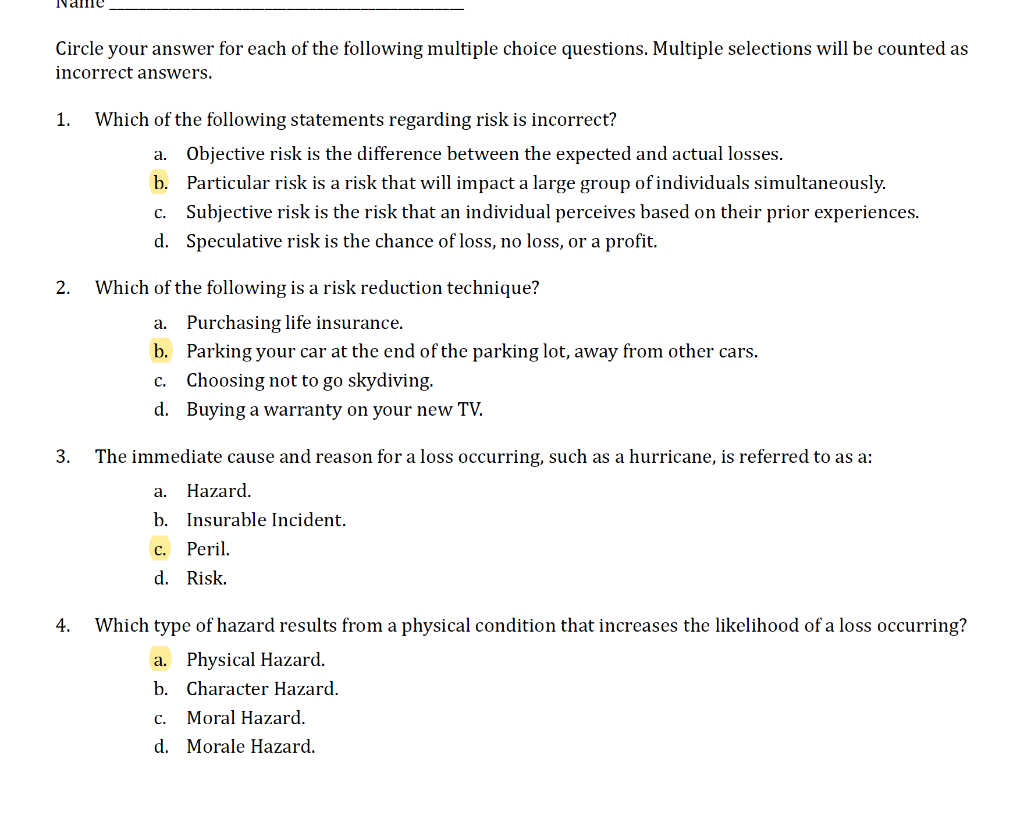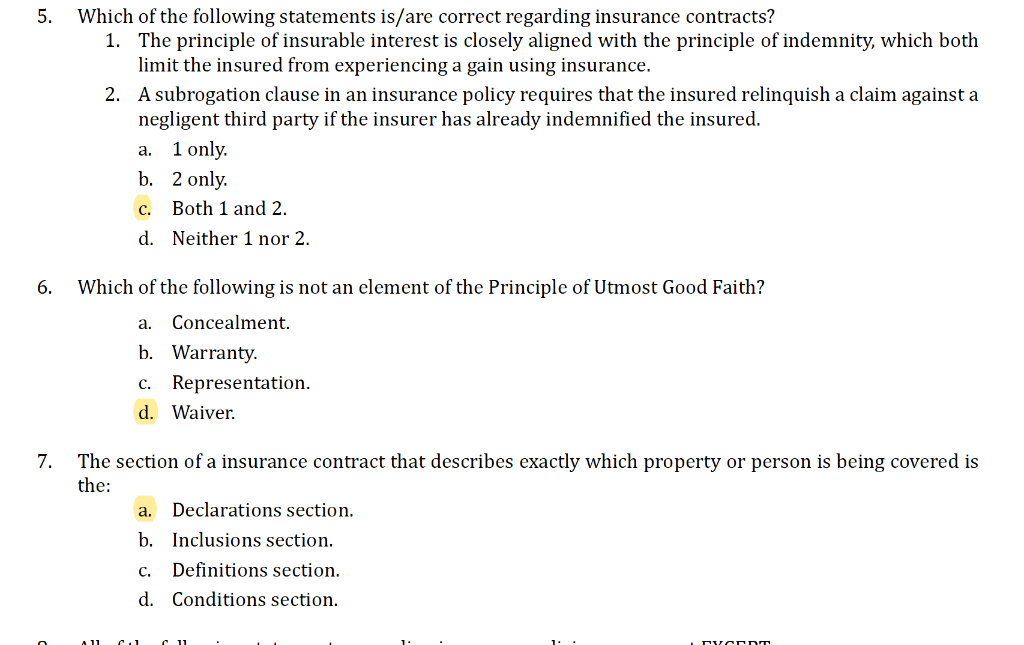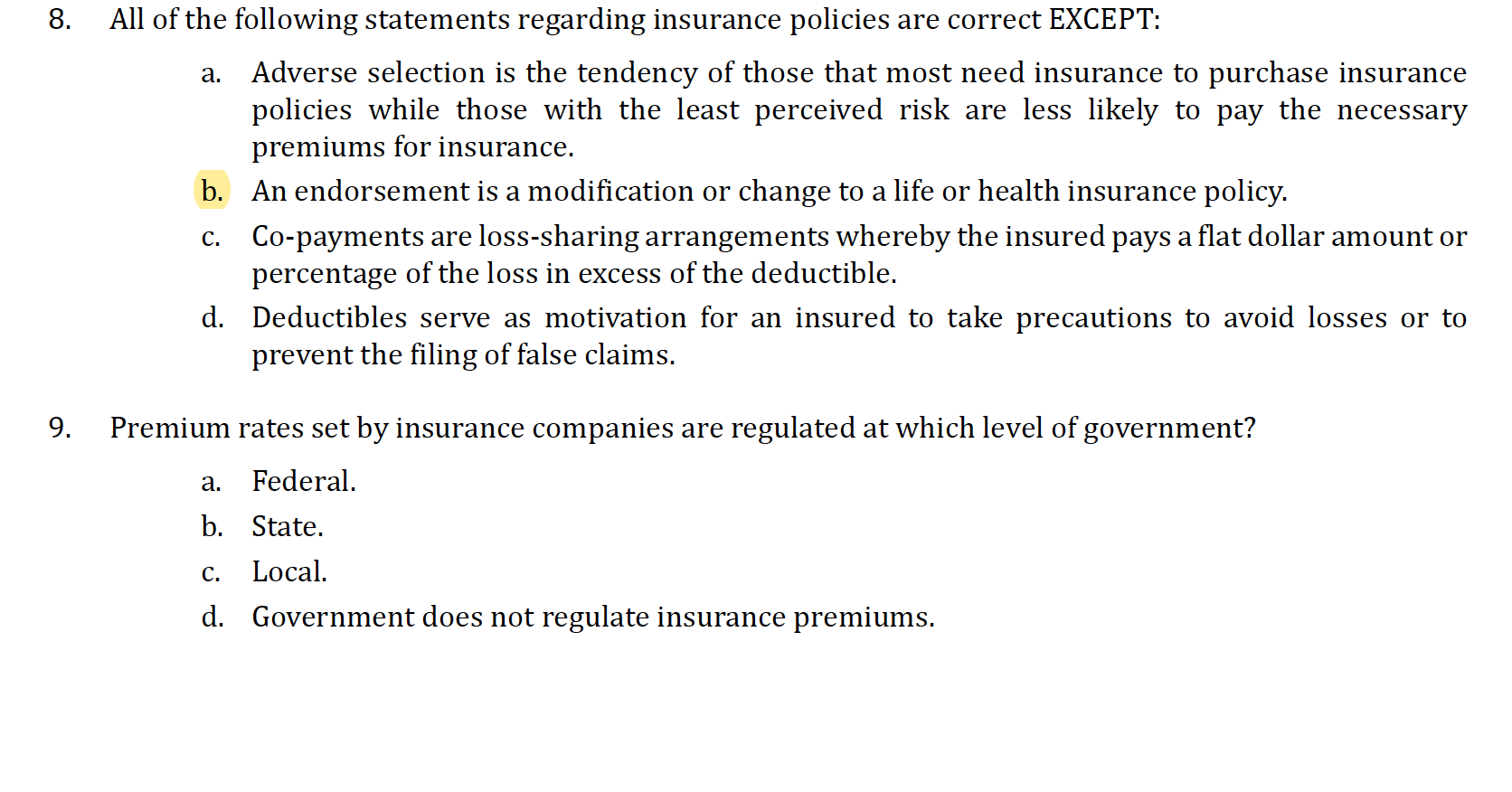



Name Circle your answer for each of the following multiple choice questions. Multiple selections will be counted as incorrect answers. 1. Which of the following statements regarding risk is incorrect? a. Objective risk is the difference between the expected and actual losses. b. Particular risk is a risk that will impact a large group of individuals simultaneously. C. Subjective risk is the risk that an individual perceives based on their prior experiences. d. Speculative risk is the chance of loss, no loss, or a profit. 2. Which of the following is a risk reduction technique? a. Purchasing life insurance. b. Parking your car at the end of the parking lot, away from other cars. c. Choosing not to go skydiving. d. Buying a warranty on your new TV. 3. The immediate cause and reason for a loss occurring, such as a hurricane, is referred to as a: a. Hazard. b. Insurable Incident. c. Peril. d. Risk. 4. Which type of hazard results from a physical condition that increases the likelihood of a loss occurring? a. Physical Hazard. b. Character Hazard. C. Moral Hazard. d. Morale Hazard. 5. Which of the following statements is/are correct regarding insurance contracts? 1. The principle of insurable interest is closely aligned with the principle of indemnity, which both limit the insured from experiencing a gain using insurance. 2. A subrogation clause in an insurance policy requires that the insured relinquish a claim against a a negligent third party if the insurer has already indemnified the insured. a. 1 only. b. 2 only. c. Both 1 and 2. d. Neither 1 nor 2. 6. Which of the following is not an element of the Principle of Utmost Good Faith? a. Concealment. b. Warranty. c. Representation. d. Waiver. 7. The section of a insurance contract that describes exactly which property or person is being covered is the: a. Declarations section. b. Inclusions section. Definitions section. d. Conditions section. c. 11 1. . 8. a. All of the following statements regarding insurance policies are correct EXCEPT: Adverse selection is the tendency of those that most need insurance to purchase insurance policies while those with the least perceived risk are less likely to pay the necessary premiums for insurance. b. An endorsement is a modification or change to a life or health insurance policy. Co-payments are loss-sharing arrangements whereby the insured pays a flat dollar amount or percentage of the loss in excess of the deductible. d. Deductibles serve as motivation for an insured to take precautions to avoid losses or to prevent the filing of false claims. c. 9. a. Premium rates set by insurance companies are regulated at which level of government? Federal. b. State. Local. d. Government does not regulate insurance premiums. c. 10. Maren owns a home with a $400,000 replacement value. This January, a snowstorm causes $75,000 in damages to the home. Maren has an insurance policy with 80% coinsurance and a $1,000 deductible. How much will the insurer pay if Maren carries $300,000 of coverage? a. $60,000.00. b. $69,312.50. c. $70,312.50. d. $75,000.00










